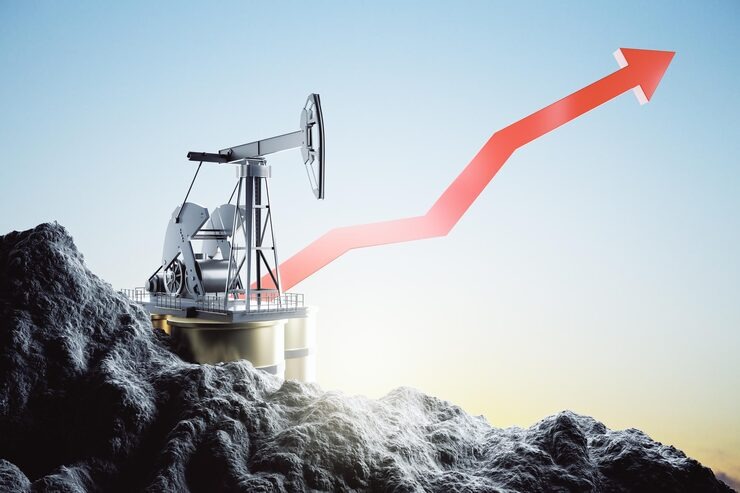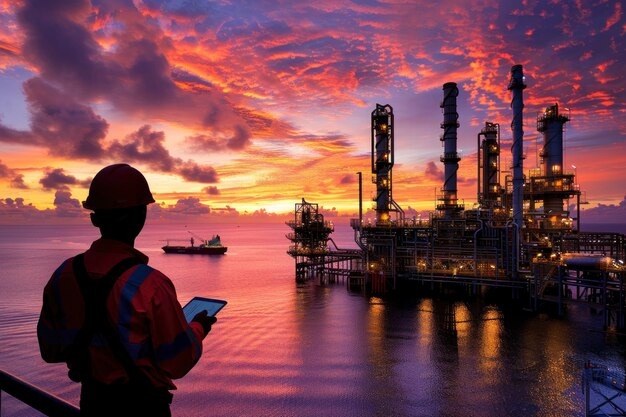Why Digital Visibility Fuels Business Growth
High‑ranking search results aren’t just vanity metrics, they’re a lifeline. As more stakeholders use search engines to vet vendors, appearing on the first page of Google can mean the difference between landing a million‑dollar project or being invisible. A solid SEO strategy makes sure your business is discoverable, builds credibility and acts as an always‑on sales engine. It’s the digital equivalent of a billboard on a busy highway, except you don’t pay rent for each eyeball.
Why is SEO so important? SEO drives more qualified leads at a lower cost than traditional advertising. Unlike paid ads that stop when your budget runs out, organic rankings continue to deliver traffic over time. With more than three‑fifths of Google searches now happening on mobile devices, your potential clients are literally carrying your business in their pockets.
The Unique Challenges of Oil & Gas SEO
Oil and gas content is technical, global and regulated. You need to appeal to engineers, investors, regulators and local communities – often in multiple languages and jurisdictions. Creating SEO‑friendly content that conveys complex processes like drilling operations or LNG processing is tough. Plus, market volatility can change demand trends overnight.
Here’s how to address those challenges:
- Speak to humans first, search engines second. Translate jargon into plain language so buyers and search algorithms understand you.
- Localize your content. Target regional keywords and tailor messaging to local regulations and cultural nuances.
- Stay agile. Use data analytics to monitor search trends and adjust quickly when the market shifts.
Building the Foundation: Keyword Strategy & Semantic SEO
Keyword research is the fuel that powers your SEO engine. Begin by identifying high‑intent phrases your audience uses at different stages of the buying process. Industry‑specific terms like “oil field services” and “energy solutions” help you attract decision‑makers. Don’t forget long‑tail phrases such as “renewable diesel suppliers in Texas” or “oil rig maintenance safety checklist” – these are often easier to rank for and bring in highly qualified traffic.
Semantic SEO & Programmatic Content
Modern search algorithms use machine learning and semantic analysis to understand context. Rather than stuffing pages with exact‑match keywords, build clusters of related content around broader themes (e.g., upstream exploration, drilling safety, ESG reporting). Use schema markup and topic modeling to help search engines connect your pages, anticipate user intent and improve generative AI visibility.
Programmatic SEO takes this a step further by using data and templates to generate hundreds of optimized pages at scale. For instance, you could create landing pages for every major producing region, each customized with local keywords, contact details and FAQs. Just ensure the content quality remains high, with human oversight and unique value.
On‑Page Optimization: Crafting Pages That Rank & Convert
Well‑optimized pages signal relevance to both traditional search engines and AI models. Follow these best practices:
- Engaging Titles & Meta Descriptions – Use compelling language that includes your primary keyword within the first 60 characters. Example: “Oil & Gas SEO Strategies: Boost Visibility & Win Deals.”
- Structured Headings & Readable Layout – Break up text with H2s and H3s. Use bullet lists and short paragraphs (1–3 sentences) for readability.
- Optimized Images & Video – Add descriptive file names and alt text. Visual content like diagrams of drilling equipment or walkthrough videos increases dwell time.
- Internal Linking & Topic Clusters – Link to related articles on supply chain management, emission reduction or legal compliance. This strengthens topical relevance and keeps readers on your site longer.
- LLM‑Ready Content – Large language models (LLMs) like ChatGPT pull answers from authoritative pages. Use clear definitions, concise bullet lists and Q&A sections to increase the likelihood of being cited.
Off‑Page Authority: Backlinks & Digital PR
Backlinks from reputable websites are endorsements that tell search engines you’re trustworthy. In the oil & gas sector, aim to secure links from:
- Industry publications and trade associations (e.g., E&P magazine, American Petroleum Institute).
- Engineering firms and equipment manufacturers you partner with.
- Academic research and energy blogs, especially when publishing thought‑leadership pieces.
Guest posting, press releases and participation in industry events can earn you high‑quality backlinks. Be sure to monitor your backlink profile and disavow spammy links that could harm your reputation.
Local & Mobile SEO: Be Where Your Clients Are
Most oil and gas deals are regionally based. Local SEO ensures you appear when someone searches “oilfield services near me” or “pipeline repair contractor in Houston.” Keep your Google Business Profile up to date, use consistent NAP (Name, Address, Phone) information, and encourage satisfied clients to leave reviews.
With 60 % of Google searches occurring on mobile devices, your site must load fast and look great on smartphones. Use responsive design, compress images, and test pages on multiple devices. Mobile‑friendly experiences not only improve rankings but also convert more leads – the first mobile search result has an average click‑through rate of nearly 27%.
Technical SEO: Speed, Security & Crawlability
A slow or insecure website can wreck your rankings. Key technical tasks include:
- Improving page speed through caching, lazy loading and optimized code.
- Securing your site with HTTPS to protect data and build trust.
- Creating an XML sitemap and using robots.txt to guide search bots.
- Implementing structured data to help AI models understand your content.
- Regular SEO audits to catch crawl errors and broken links.
Content Marketing & Storytelling
Great SEO isn’t just about being found – it’s about connecting. Tell stories that humanize your brand: profile engineers working on offshore rigs, showcase your sustainability initiatives, or highlight community partnerships. Stories build trust and differentiate you from competitors. In fact, energy majors like Chevron and Shell have successfully used content marketing campaigns to humanize their brands and promote innovation.
To maximize reach:
- Create diverse formats: blogs, videos, podcasts, infographics and interactive tools.
- Address all stages of the buyer journey: from introductory explainers (“What is carbon capture?”) to deep‑dive white papers (“Case Study: Optimizing LNG Plant Efficiency”).
- Repurpose content: Turn a webinar into a series of blog posts, pull social snippets from research reports, or compile FAQs into a downloadable checklist.
Measuring Success & Continuous Optimization
SEO isn’t set‑and‑forget. Use analytics to track:
- Keyword rankings and organic traffic by page and region.
- Leads and conversions from organic search – measure form fills, contact calls and quote requests.
- Engagement metrics like bounce rate, dwell time and click‑through rates.
- Backlink profile growth and authority scores.
Iterate based on what works. If a blog post about “oil pipeline integrity” attracts high traffic but low engagement, enhance the content, add interactive elements or create a lead magnet like a checklist. Regular audits and A/B tests will help you stay ahead of algorithm changes and industry trends.
Advanced Techniques: AI, Programmatic & Conversational SEO
Artificial intelligence is redefining SEO. Incorporate these cutting‑edge tactics:
- LLM Seeding: Craft content that large language models can easily cite. Use clear definitions, answer “People Also Ask” questions and provide structured lists.
- Programmatic SEO: Generate location‑specific pages (e.g., “Rig Inspection Services in Alberta”) at scale, then refine them manually to ensure quality and uniqueness.
- Semantic Schema & Entities: Use schema types like Product, Organization, and FAQPage to give search engines explicit context. Link entities (company names, drilling techniques, regulation codes) to their knowledge graph entries.
- Voice Search Optimization: With more voice queries happening, write in conversational language and target question‑based keywords (“How do oil companies reduce emissions?”).
- Predictive & Generative Analytics: Apply machine‑learning models to forecast keyword trends and create content briefs automatically.
Emotional Storytelling: Bringing Your Brand to Life
SEO can feel technical, but emotion drives action. Share stories of risk and reward: an exploration team overcoming extreme weather, an engineer innovating to reduce flare emissions, or a community project that improved livelihoods. Highlight the people behind the pipelines. When potential clients feel connected to your mission, they’re more likely to trust you with their business.
Let Backstage Energy Marketing Power Your Growth
At Backstage Energy Marketing, we don’t just talk about SEO – we live it. Our experts understand the complexities of the oil and gas sector and know how to translate technical innovation into compelling digital narratives. We use cutting‑edge tools, AI‑driven insights and creative storytelling to ensure your brand shines online. If you’re ready to turn your website into a lead‑generating powerhouse, contact us.
Takeaway: Lighting the Path Forward
SEO is no longer optional for oil and gas companies – it’s the engine of growth that propels your brand forward. In a competitive market where buyers research online first, ranking high on search engines builds trust, generates qualified leads and reduces marketing costs. By investing in a comprehensive strategy that combines semantic keyword research, technical excellence, content storytelling and emerging AI trends, you’ll ensure your company isn’t just visible but unforgettable.




